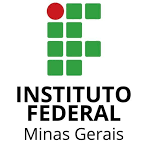RESUMO | ABSTRACT
RESUMO: Este capítulo tem como objetivo discutir como a cultura pode (e deve) ser trabalhada de forma a contribuir com a produção da linguagem no ensino de língua inglesa e como a internet e seus recursos podem ser associados a esse processo. Trata-se de uma pesquisa bibliográfica, com análise de materiais de ensino de inglês, como unidades em lições de livros didáticos, atividade realizada e blog. Como resultados, destacamos que a arte, representada aqui pela música, pelo cinema e por obras de arte, podem estimular a produção da linguagem, bem como a prática da língua através do exercício das habilidades de leitura, escrita, compreensão oral e fala, do compartilhamento de informações por meio de debates e discussões, motivando tanto alunos como professor a se despertarem para o conhecimento de diversas culturas. Por fim, concluímos que pelo fato de a língua e a cultura não se separarem, torna-se imprescindível que elas sejam trabalhadas com base em contextos, para que os aprendizes sejam mergulhados em situações comunicativas relevantes. Além disso, o professor deve estar constantemente atualizado, para que tenha condições de apresentar novas alternativas de criação de conteúdos aos alunos, a partir de suas vivências em sala de aula, proporcionando-lhes novas formas de apreciar e compartilhar experiências culturais, e contribuindo para que eles possam explorar novas - e cada vez mais dinâmicas - práticas de linguagem nesses tempos pós-modernos.
ABSTRACT: This chapter aims at discussing how culture can (and should) be worked in a way that it contributes with the production of language in the English language teaching and how the internet and its tools can be associated to this process. It is a bibliographic research, with analysis of English Teaching materials, such as units in lessons of didactic books, and a blog. As results, we highlight that art, represented here by the music, movies and works of art can stimulate the production of language, as well as the practice of language through the exercise of reading, writing, listening and speaking skills, the information sharing through debates and discussions, motivating both students and the teacher to give attention to the knowledge of different cultures. Finally, we conclude that due to the fact that language and culture do not split up, it becomes essential that they are worked based in contexts, so learners are submerged in relevant communicative situations. Besides, the teacher should be constantly updated, to have conditions to present new alternatives of creation of content to students, based on their classroom experiences, providing them with new ways to appreciate and share their cultural experiences, and also explore new - e even more dynamic - language practices in these postmodern times.
